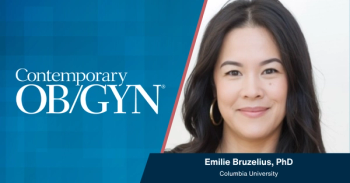
Is naltrexone safe for pregnant patients?
Results of new research from American Journal and Obstetrics & Gynecology suggest that naltrexone may be an option for pregnant women who use opioids.
Results of new
Methods
Published in the
In the study, the daily dosage range was 8 to 16 mg for buprenorphine and 50 to 120 mg for methadone. Patients on naltrexone must have been opioid-free for at least 7 days and have had two negative drug screens before taking the drug. The daily oral dosage was 50 mg.
At ≥ 24 weeks’ gestation, fetal heart rate (FHR) monitoring was done for ≥ 60 minutes while the initial naltrexone dose was administered. At < 24 weeks, the FHR was evaluated with Doppler or ultrasound imaging before the first dose, 30 minutes after dosing, and again at 60 minutes. Biophysical profiles were done on all the patients every other week from 28 to 32 weeks’ gestation and weekly thereafter until delivery.
Results
In the naltrexone group, the rate of NAS in neonates > 34 weeks was significantly lower (10/119 [8.4%] vs 79/105 [75.2%]; P < .0001). The only significant factor for the rate of NAS, according to multivariate analysis, was the form of MAT. In the naltrexone group, 87 patients took the drug up to delivery and none of the neonates had NAS.
Looking at maternal outcomes, the authors found that no relapses occurred in the 7-day no-treatment window before initiation of naltrexone. Neither group experiences any spontaneous abortions or stillbirths. No changes in FHR tracings were seen on initiation of naltrexone at ≥ 24 weeks’ gestation.
No differences in incidence of birth anomalies were seen between the naltrexone and standard-care groups. Umbilical cord blood and maternal levels of naltrexone and 6-beta-naltrexol matched; no levels were elevated, and values were undetected if naltrexone was discontinued > 60 hours before delivery.
Conclusions
“This prospective study now shows,” the authors said, “that naltrexone MAT is a viable option for some women it they are successful at complete opioid detoxification. Additionally, for those pregnant patients who already are receiving naltrexone therapy at the start of pregnancy, continuing naltrexone MAT can also be an option.” The researchers noted, however, that long-term follow-up of these mothers and infants is needed to compare their progress with that in mother/child pairs exposed to MAT and who receive no opioids at delivery.
Newsletter
Get the latest clinical updates, case studies, and expert commentary in obstetric and gynecologic care. Sign up now to stay informed.
















